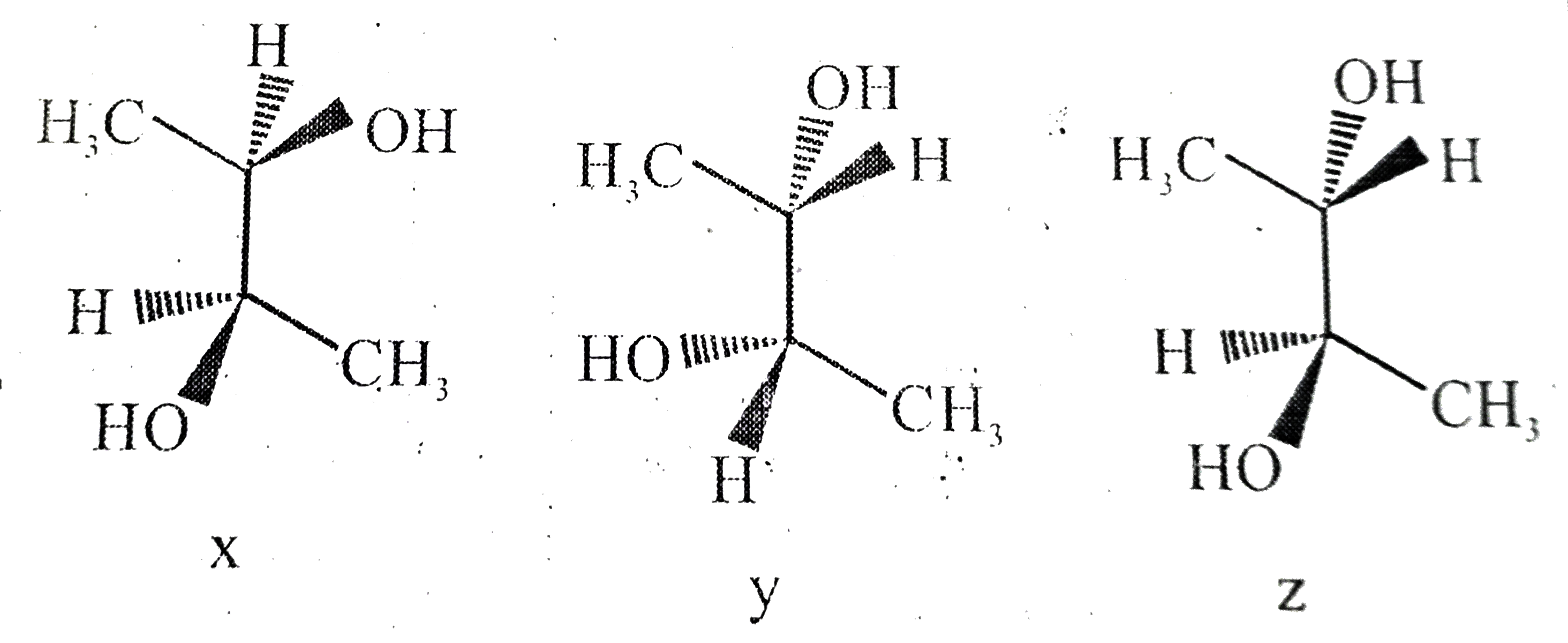Which of the following is copper (I) compound ?
[Cu(H2O)4]2+
[Cu(CN)4]3−
[Cu(NH3)4]2+
All of these
The correct Answer is:B
To determine which of the given compounds is a copper (I) compound, we need to analyze the oxidation state of copper in each compound.
1. Identify the Compounds: We have three compounds to analyze:
- Compound 1: (Cu(H2O)4)2+
- Compound 2: (Cu(CN)4)3−
- Compound 3: (Cu(NH3)4)2+
2. Analyze Compound 1:
- The oxidation state of copper (Cu) is denoted as x.
- Water (H₂O) is a neutral ligand, contributing 0 to the charge.
- The overall charge on the coordination sphere is +2.
- Therefore, we set up the equation:
x+0=+2⟹x=+2
- Conclusion: Copper in this compound is in the +2 oxidation state.
3. Analyze Compound 2:
- Again, let the oxidation state of copper be x.
- Each cyanide ion (CN) has a charge of -1, and there are 4 cyanide ions, contributing -4 to the charge.
- The overall charge on the coordination sphere is -3.
- Set up the equation:
x+(−4)=−3⟹x−4=−3⟹x=+1
- Conclusion: Copper in this compound is in the +1 oxidation state.
4. Analyze Compound 3:
- Let the oxidation state of copper be x.
- Ammonia (NH₃) is also a neutral ligand, contributing 0 to the charge.
- The overall charge on the coordination sphere is +2.
- Set up the equation:
x+0=+2⟹x=+2
- Conclusion: Copper in this compound is in the +2 oxidation state.
5. Final Conclusion:
- From the analysis, we find that only Compound 2 ((Cu(CN)4)3−) has copper in the +1 oxidation state. Therefore, the correct answer is:
- Copper (I) compound is (Cu(CN)4)3−.
- Compound 1: (Cu(H2O)4)2+
- Compound 2: (Cu(CN)4)3−
- Compound 3: (Cu(NH3)4)2+
- The oxidation state of copper (Cu) is denoted as x.
- Water (H₂O) is a neutral ligand, contributing 0 to the charge.
- The overall charge on the coordination sphere is +2.
- Therefore, we set up the equation:
x+0=+2⟹x=+2
- Conclusion: Copper in this compound is in the +2 oxidation state.
- Again, let the oxidation state of copper be x.
- Each cyanide ion (CN) has a charge of -1, and there are 4 cyanide ions, contributing -4 to the charge.
- The overall charge on the coordination sphere is -3.
- Set up the equation:
x+(−4)=−3⟹x−4=−3⟹x=+1
- Conclusion: Copper in this compound is in the +1 oxidation state.
- Let the oxidation state of copper be x.
- Ammonia (NH₃) is also a neutral ligand, contributing 0 to the charge.
- The overall charge on the coordination sphere is +2.
- Set up the equation:
x+0=+2⟹x=+2
- Conclusion: Copper in this compound is in the +2 oxidation state.
- From the analysis, we find that only Compound 2 ((Cu(CN)4)3−) has copper in the +1 oxidation state. Therefore, the correct answer is:
- Copper (I) compound is (Cu(CN)4)3−.
Topper's Solved these Questions
- COORDINATION COMPOUNDSBook:RESONANCE ENGLISHChapter:COORDINATION COMPOUNDSExercise:Exercise Part-II: Section (B)
Explore 5 Videos
- COORDINATION COMPOUNDSBook:RESONANCE ENGLISHChapter:COORDINATION COMPOUNDSExercise:Exercise Part-II: Section (C)
Explore 9 Videos
- COORDINATION COMPOUNDSBook:RESONANCE ENGLISHChapter:COORDINATION COMPOUNDSExercise:Exercise Part-I: Subjective Question Section (H)
Explore 2 Videos
- CHEMISTRY IN EVERYDAY LIFEBook:RESONANCE ENGLISHChapter:CHEMISTRY IN EVERYDAY LIFEExercise:ORGANIC CHEMISTRY(Chemistry in every day life)
Explore 31 Videos
- D & F BLOCK ELEMENTSBook:RESONANCE ENGLISHChapter:D & F BLOCK ELEMENTSExercise:ORGANIC CHEMISTRY(Aldehydes , Ketones, Carboxylic acid)
Explore 15 Videos
Similar Questions
Which of the following is a covalent compound?
View SolutionWhich of the following contains copper ?
View SolutionWhich of the following is a chiral compound?
View SolutionWhich of the following is an organic compound
View SolutionWhich of the following is a chiral compound :
View SolutionWhich of the following is an achiral compound?
View SolutionWhich of the following is/are meso compound:
View SolutionWhich of the following is a hypervalent compound?
View SolutionWhich of the following is a hypovalent compound?
View SolutionWhich of the following is meso compound?

View Solution
